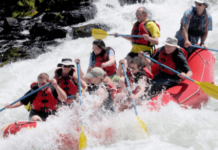The Importance of Baby Gorillas in Ecosystems
Hafez, a young gorilla rescued from the clutches of illegal wildlife trafficking, serves as a poignant reminder of the threats faced by baby gorillas in the wild. His story sheds light on the critical need for strong enforcement measures and heightened global awareness to combat the illicit trade that jeopardizes the survival of these magnificent creatures. Through Hafez’s journey of recovery and rehabilitation, we witness the resilience and tenacity inherent in baby gorillas, making a compelling case for intensified conservation efforts to safeguard their future and the biodiversity they support.
The presence of baby gorillas in ecosystems plays a pivotal role in maintaining the delicate balance of biodiversity. From seed dispersal to fostering habitat regeneration, these young primates contribute significantly to the health and vitality of their surroundings. By protecting and conserving baby gorillas, we not only safeguard a unique and irreplaceable species but also safeguard the intricate web of life that relies on their presence for stability and resilience.
The Role of Baby Gorillas in Maintaining Biodiversity
Hafez, a baby gorilla rescued from the clutches of illegal wildlife trafficking, represents a beacon of hope and resilience in the face of adversity. His poignant tale sheds light on the brutality of smuggling operations and underscores the critical need for conservation measures to safeguard these vulnerable creatures. Hafez’s journey of recovery serves as a poignant reminder of the indispensable role played by enforcement teams, heightened global awareness, and dedicated rehabilitation initiatives in shielding baby gorillas and preserving the delicate balance of biodiversity in their habitats.
As ambassadors of their species, baby gorillas like Hafez contribute significantly to the intricate web of life within their ecosystems. Through their playful interactions, foraging habits, and social bonds, these young primates play a pivotal role in shaping the dynamics of their surroundings. Their presence fosters a rich tapestry of biodiversity, supporting a range of plant and animal species that rely on the health and vitality of gorilla populations for their own survival. By nurturing the delicate balance of their habitats, baby gorillas exemplify nature’s resilience and underscore the interconnectedness of all living beings in the intricate mosaic of life.
How Baby Gorillas Contribute to the Health of Their Habitats
Hafez, a rescued baby gorilla, serves as a poignant example of the significant impact that these young primates can have on their habitats. As he continues to thrive under the care of conservationists, Hafez embodies the resilience and hope essential for the preservation of biodiversity in the wild. Through his journey, we witness firsthand the crucial contribution that baby gorillas make to the health and balance of their ecosystems.
By foraging for food, dispersing seeds, and shaping vegetation through their playful interactions, baby gorillas play a vital role in maintaining the ecological integrity of their habitats. As they move through the forest, these young primates inadvertently aid in seed dispersal, which fosters plant regeneration and diversity. Furthermore, their presence influences the behavior of other species, creating a ripple effect that contributes to the overall health and stability of the ecosystem.
The Unique Characteristics of Baby Gorillas Like Hafez
Hafez, a remarkable baby gorilla with a captivating tale, embodies the spirit of survival and perseverance. His journey from being a victim of illegal wildlife trade at Istanbul Airport to a symbol of hope sheds light on the dark realities of trafficking and the pressing need for conservation efforts. Hafez’s resilience serves as a poignant reminder of the critical role that enforcement agencies, international acknowledgment, and rehabilitation initiatives play in safeguarding the well-being of baby gorillas and the overall biodiversity they are part of.
The Interactions Between Baby Gorillas and Other Species
Baby gorillas like Hafez often engage in various interactions with other species within their habitats. These interactions play a crucial role in maintaining the delicate balance of ecosystems. For instance, their foraging habits can impact plant distribution and seed dispersal, influencing the overall vegetation structure and diversity in the area. Additionally, interactions with insects and smaller animals can contribute to nutrient cycling and predator-prey dynamics, creating a ripple effect on the entire ecosystem.
Furthermore, the social behavior of baby gorillas, such as grooming and playing, can also influence the dynamics within their social groups and even affect the behavior of other species nearby. These interactions foster interconnectedness within the ecosystem and highlight the intricate web of relationships that exist between different organisms. Studying these interactions not only provides insights into the complexity of natural systems but also underscores the importance of preserving the habitats that support such diverse interactions for the long-term health of ecosystems.
The Threats Faced by Baby Gorillas in the Wild
Baby gorillas in the wild face numerous threats that jeopardize their survival. Illegal poaching for the exotic pet trade and bushmeat consumption remains a significant concern, leading to the depletion of gorilla populations. Additionally, habitat destruction due to deforestation and human encroachment further exacerbates the challenges faced by these vulnerable creatures. Without immediate intervention and sustainable conservation measures, the future of baby gorillas in their natural habitats is at risk.
Furthermore, diseases spread by humans, such as respiratory infections and Ebola, pose a severe threat to baby gorillas. The close genetic similarity between humans and gorillas makes them highly susceptible to these illnesses, making it imperative to address the impact of human presence on gorilla populations. Climate change also presents a growing threat, altering ecosystems and affecting the availability of food sources for baby gorillas. As these challenges continue to mount, urgent action is needed to safeguard the well-being of baby gorillas and ensure the preservation of biodiversity in their habitats.
The Conservation Efforts Aimed at Protecting Baby Gorillas
Successfully protecting baby gorillas in the wild requires a multi-faceted approach that addresses various threats they face. Illegal poaching and habitat destruction are major challenges that conservation efforts must combat to ensure the survival of these vulnerable animals. By targeting the root causes of these threats, conservation organizations can make significant strides in safeguarding the future of baby gorillas and their ecosystems.
Collaboration among local communities, governments, and international conservation groups is essential to create effective strategies for protecting baby gorillas. Building strong partnerships, implementing sustainable practices, and raising awareness about the importance of these animals are key components of successful conservation efforts. By working together towards a common goal, we can ensure a brighter future for baby gorillas and the rich biodiversity they contribute to.
The Significance of Baby Gorillas for Ecotourism
Ecotourism plays a significant role in raising awareness and funding for the conservation of endangered species like baby gorillas. Visitors are drawn to the opportunity to observe these majestic animals in their natural habitats, which in turn supports local economies and wildlife protection initiatives. The presence of baby gorillas in ecotourism provides a unique and unforgettable experience for travelers, fostering a deeper connection to the importance of preserving these precious creatures and their habitats.
By engaging with baby gorillas in a responsible and sustainable manner, ecotourism not only generates revenue for conservation projects but also helps to promote the value of these animals in the global community. Additionally, the presence of baby gorillas in ecotourism activities creates opportunities for researchers and conservationists to study and monitor their behavior, health, and interactions with other species. Through these educational and observational experiences, visitors gain a greater appreciation for the significance of baby gorillas in maintaining the delicate balance of their ecosystems.
The Future Outlook for Baby Gorillas and Their Impact on Biodiversity
Hafez, a young gorilla rescued from the clutches of illegal wildlife trafficking, serves as a beacon of hope and endurance. His poignant tale sheds light on the inhumane practices of smuggling and emphasizes the critical significance of conservation. As Hafez recuperates under the care of dedicated rehabilitation teams, his journey underscores the pivotal role of stringent enforcement measures, heightened global consciousness, and robust rehabilitation initiatives in safeguarding the welfare of baby gorillas and fostering biodiversity.
The future outlook for baby gorillas like Hafez hinges on a collective commitment to combat illegal wildlife trade and preserve their natural habitats. By amplifying awareness, reinforcing protective legislation, and bolstering conservation efforts, we can aspire to mitigate the threats faced by these vulnerable creatures. Encouraging public engagement, promoting sustainable ecotourism practices, and fostering research collaborations are vital components in shaping a promising future for baby gorillas and sustaining the rich tapestry of biodiversity they contribute to.
The Need to Educate the Public on the Value of Baby Gorillas in Ecosystems
Public awareness about the value of baby gorillas in ecosystems is crucial for their protection and well-being. By understanding the importance of these young primates in maintaining biodiversity and ecosystem health, individuals can appreciate the interconnectedness of all living organisms. Educating the public on the threats faced by baby gorillas in the wild, such as habitat loss and poaching, can foster a sense of responsibility towards conservation efforts.
Furthermore, showcasing the significance of baby gorillas for ecotourism can emphasize the economic benefits of preserving these animals and their habitats. By promoting sustainable tourism practices that support conservation initiatives, communities can see the tangible value of protecting baby gorillas for future generations. Overall, raising awareness about the value of baby gorillas in ecosystems is essential for fostering a sense of stewardship and advocating for their long-term survival.




